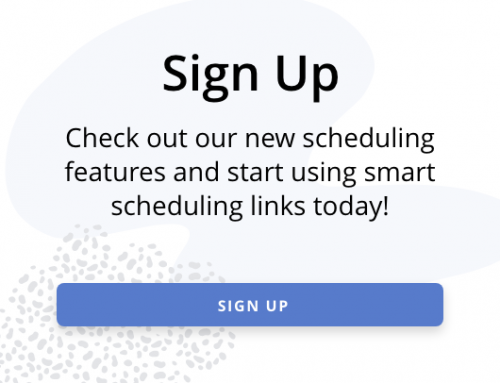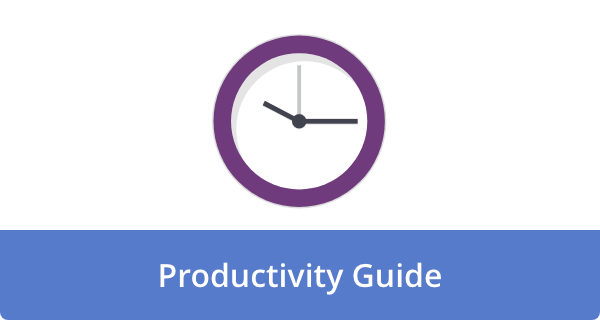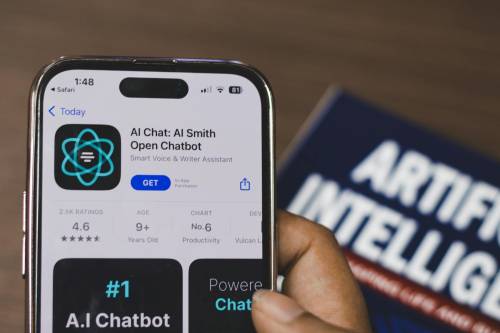

The phrase “work smarter, not harder” has become more than just a mantra in the world of productivity. For years, the best advice for professionals with limited time has been to delegate. If you’re not able to devote enough time to a task, outsource it. As a result, you can concentrate on your unique skills and abilities.
Now, it’s a whole new game. With rapid advances in artificial intelligence, time management has gained a new tool: automation.
We’re not just talking about freeing up time, but also redesigning how we work.
The Traditional Time Management Pyramid
AI’s role is best understood by understanding the three pillars of smart time management;
- Elimination. Get rid of the tasks that aren’t necessary.
- Delegation. Let someone else handle the tasks that are beyond their capabilities.
- Optimization. Continue to improve what’s left.
In the past, humans handled all three. By eliminating distractions, delegating tasks to virtual assistants, and tweaking your schedule, you can maximize performance.
AI, however, adds a fourth and revolutionary layer to this framework: automation.
What Is Automation, Really?
Automation is more than setting up calendar reminders or setting a timer with a smart speaker. Automating repetitive, low-level, or time-consuming tasks involves letting machines handle them without you having to manage them directly.
Unlike traditional delegation, automation does not require humans to hand off work to another person. In a quick, efficient, and unhindered manner, tasks are handled.
Practically speaking, that means;
- Inboxes sort themselves automatically.
- Meeting notes are automatically transcribed and summarized.
- Based on performance data, your social media is scheduled and optimized.
- AI automatically generates a response for your customer service emails.
Automation isn’t just a shortcut; it’s a shift in who (or what) does the work.
Where Delegation Ends and Automation Begins
Here are a few everyday tasks that illustrate how the line between delegation and automation is blurring;
| Task | Traditionally Delegated To | Now Can Be Automated By |
| Inbox management | Virtual assistant | AI email prioritizers (e.g., Superhuman, Gmail AI) |
| Calendar scheduling | Executive assistant | AI scheduling tools (e.g., Reclaim, Clockwise) |
| Content drafting | Freelance writer | AI writing tools (e.g., ChatGPT, Jasper) |
| Data entry | Admin support | AI form-fillers, OCR tools |
| Meeting notes | Colleague or assistant | AI notetakers (e.g., Otter.ai, Fireflies) |
This does not mean that people are being replaced. Instead, the human attention is being redirected to more strategic, creative, and emotionally nuanced work – things that still cannot be automated..
The Power of Automation in Time Management
Why are automation tools so valuable?
It reduces context switching.
Switching between tasks is one of the biggest productivity killers. AI tools, however, can automate in-between tasks, such as summarizing reports, updating spreadsheets, and responding to repetitive queries, so you can focus on more important tasks.
It works 24/7.
As opposed to human teammates, AI doesn’t require sleep, breaks, or meetings. As a result, things like data processing, customer support, and content generation can be done while you’re away from your desk.
Scales with your needs.
Adding more team members costs time and money. By using AI tools, it is possible to handle greater volumes of data, messages, and tasks instantly and without the same logistical burden. As a result, automation is particularly useful for entrepreneurs, solopreneurs, and lean teams.
You get real-time feedback.
As AI systems learn, they improve. Using these tools, you can pinpoint inefficiencies and analyze patterns in your habits. You can even suggest improvements based on the results. You can think of them as productivity advisors integrated into your workflow.
Real-World Use Cases: AI Time Management in Action
Here are a few ways professionals are already using AI in their daily time management;
- AI helps writers generate outlines, rewrite content, and brainstorm titles, cutting hours from the writing process.
- AI scheduling assists executives with optimizing meetings and automatically blocking time for deep work.
- Using chatbots, customer service teams can handle simple inquiries, so they can focus on more complex queries.
- AI helps marketers test campaigns and schedule content automatically, as well as analyze audience engagement.
- Invoices, time tracking, and task management can be automated with AI tools for freelancers and solopreneurs.
These examples show how AI isn’t just saving time, but also improving results.
When to Delegate vs. When to Automate
AI is a powerful tool, but it’s not a universal solution. If you’re not sure which direction to go, here’s a simple guide;
| Ask Yourself… | Delegate It If… | Automate It If… |
| Does it require empathy, judgment, or a personal touch? | Yes | No |
| Is it repetitive and rules-based? | Possibly | Definitely |
| Does it require nuanced decision-making or negotiation? | Yes | Not yet |
| Is it time-consuming but predictable? | Maybe | Yes |
| Would a human do it better, but at a cost? | Delegate | Automate or hybrid |
In a nutshell: Delegate human-centric, nuanced, and complex tasks. You should automate the predictable, repetitive, and rule-based ones.
How to Start Integrating AI Into Your Workflow
Are you ready to dive into AI-powered productivity? Start small and grow from there.
Identify repetitive tasks.
Review your calendar, task list, and inbox. Are there any tasks that come up repeatedly? This is where to begin.
Explore the right tools.
You may want to consider the following tools;
- Email & scheduling. Calendar, Superhuman, Reclaim, and Motion
- Note-taking & transcription. Otter.ai, Fireflies, and Notion AI
- Writing & content. ChatGPT, Jasper, and Grammarly
- Admin & Invoicing. QuickBooks AI, Bonsai, and ClickUp AI
Automate one task at a time.
Don’t try to overhaul your entire workflow overnight. Start with one low-risk task, such as transcribing meetings or scheduling social posts automatically.
Measure the impact.
Track how much time you save and how your work quality changes. This helps justify further investment and builds momentum.
Maintain oversight.
Your automation system won’t run on its own. You have to be able to check in, adjust, and ensure it’s working properly.
A Word of Caution: Avoid Over-Automation
In the world of automation, there’s a fine line between smart automation and blind dependence. When you over-automate your workflow, you may experience;
- Lack of personal touch in communication
- Inconsistencies in data or customer feedback
- Concerns about transparency and privacy
Use AI as a tool, not as a crutch. Augmentation, not replacement, is the goal.
Final Thoughts: The Future of Time Management
As AI evolves, so will our working methods. There is one constant, however: your time is your most valuable asset.
We were able to reclaim hours through delegation. By automating tasks, we are rethinking how those hours are spent.
Our objective is to develop workflows that are not only faster but also smarter by combining human strengths with AI’s efficiency and scalability.
It’s not just about getting more done when it comes to time management. The goal is to focus on what matters and let machines handle the rest.
Frequently Asked Questions
Will AI automation replace human jobs?
Although AI can automate many repetitive tasks, it is more accurate to say that AI will transform jobs than simply replace them. In the future, humans will likely focus on strategic, creative, and interpersonal tasks that require empathy, judgment, and complex problem-solving abilities that AI lacks at the moment. Rather than replacing outright, the goal is to augment.
Is AI automation expensive to implement for individuals or small businesses?
Not necessarily.
Even individuals and small businesses can easily access AI tools thanks to their free tiers or affordable subscription plans. Often, the cost depends on how complex the task is and how much work is involved as well. With just one or two low-cost tools for highly repetitive tasks, you can save a great deal of time and make a positive return on investment.
How do I choose the right AI tools for my specific needs?
The first step is to identify your most time-consuming and repetitive tasks. Next, research artificial intelligence tools that can automate these tasks. You should look for tools with good reviews, clear privacy policies, and features that align with your workflow. Many tools offer free trials, so you can try them out before committing. If you’re just getting started, start with widely used tools like those for managing email, scheduling, or creating content, as they often have more robust features.
What are the biggest risks of relying too heavily on AI automation?
When AI is overused, it can lose its personal touch in communication, potentially resulting in critical human nuances being missed in customer interactions or data. Aside from ethical considerations, AI algorithms can also be biased, for example, due to data privacy concerns. It is important to maintain human oversight, review automated processes regularly, and make sure that AI tools augment, not diminish, human capabilities.
How can I stay updated on the latest AI automation tools and best practices?
Artificial intelligence is undergoing rapid development. Keeping up with the latest advances in AI and automation requires following reputable tech news outlets, receiving newsletters from leading AI companies, and participating in online communities and forums. You can also gain valuable insights into new tools and strategies by attending webinars or virtual conferences. As you experiment with new features and applications, you will also be able to adapt and integrate AI into your workflow more effectively.
Image Credit: Tara Winstead; Pexels











John Rampton
John’s goal in life is to make people’s lives much more productive. Upping productivity allows us to spend more time doing the things we enjoy most. John was recently recognized by Entrepreneur Magazine as being one of the top marketers in the World. John is co-founder of Calendar.